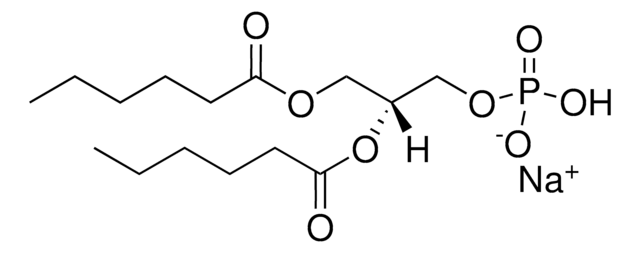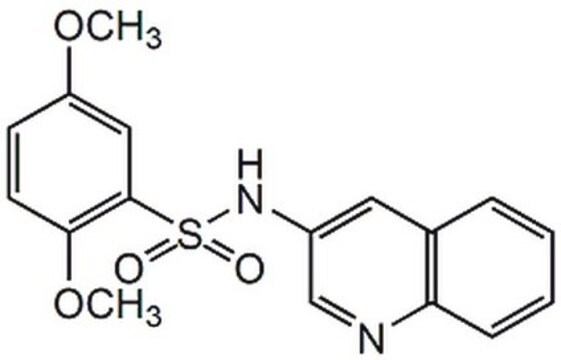850476C
Avanti
18:1-18:0 PC
1-oleoyl-2-stearoyl-sn-glycero-3-phosphocholine, chloroform
Synonym(e):
1--(9Z-octadecenoyl)-2-octadecanoyl-sn-glycero-3-phosphocholine; OSPC; PC(18:1(9Z)/18:0)
About This Item
Empfohlene Produkte
Assay
>99% (TLC)
Form
liquid
Verpackung
pkg of 1 × 2.5 mL (850476C-25mg)
Hersteller/Markenname
Avanti Polar Lipids 850476C
Konzentration
10 mg/mL (850476C-25mg)
Lipid-Typ
cardiolipins
phospholipids
Versandbedingung
dry ice
Lagertemp.
−20°C
InChI
1S/C44H86NO8P/c1-6-8-10-12-14-16-18-20-22-24-26-28-30-32-34-36-43(46)50-40-42(41-52-54(48,49)51-39-38-45(3,4)5)53-44(47)37-35-33-31-29-27-25-23-21-19-17-15-13-11-9-7-2/h20,22,42H,6-19,21,23-41H2,1-5H3/b22-20-/t42-/m1/s1
InChIKey
NMJCSTNQFYPVOR-VHONOUADSA-N
Verwandte Kategorien
Allgemeine Beschreibung
Anwendung
- as a lipid standard in ultra-performance liquid chromatography (UPLC) analyses
- in bilayer membranes to study the bilayer phase transitions
- in liposome as substrate to study the transacylase activities of different lysosomal phospholipase A2 (LPLA2) variants
Biochem./physiol. Wirkung
Verpackung
Rechtliche Hinweise
Signalwort
Danger
Gefahreneinstufungen
Acute Tox. 3 Inhalation - Acute Tox. 4 Oral - Aquatic Chronic 3 - Carc. 2 - Eye Irrit. 2 - Repr. 2 - Skin Irrit. 2 - STOT RE 1 - STOT SE 3
Zielorgane
Central nervous system
Lagerklassenschlüssel
6.1D - Non-combustible, acute toxic Cat.3 / toxic hazardous materials or hazardous materials causing chronic effects
WGK
WGK 3
Flammpunkt (°F)
does not flash
Flammpunkt (°C)
does not flash
Zulassungslistungen
Zulassungslistungen werden hauptsächlich für chemische Produkte erstellt. Für nicht-chemische Produkte können hier nur begrenzte Angaben gemacht werden. Kein Eintrag bedeutet, dass keine der Komponenten gelistet ist. Es liegt in der Verantwortung des Benutzers, die sichere und legale Verwendung des Produkts zu gewährleisten.
EU REACH Annex XVII (Restriction List)
Analysenzertifikate (COA)
Suchen Sie nach Analysenzertifikate (COA), indem Sie die Lot-/Chargennummer des Produkts eingeben. Lot- und Chargennummern sind auf dem Produktetikett hinter den Wörtern ‘Lot’ oder ‘Batch’ (Lot oder Charge) zu finden.
Besitzen Sie dieses Produkt bereits?
In der Dokumentenbibliothek finden Sie die Dokumentation zu den Produkten, die Sie kürzlich erworben haben.
Unser Team von Wissenschaftlern verfügt über Erfahrung in allen Forschungsbereichen einschließlich Life Science, Materialwissenschaften, chemischer Synthese, Chromatographie, Analytik und vielen mehr..
Setzen Sie sich mit dem technischen Dienst in Verbindung.










